The birth of the tobacco industry in Durham started with a handful of people -none of whom were named Blackwell, Watts, Duke, or Carr - who saw the new 'town' of Durham Station as a place of opportunity.
The first entrepreneur to see Durham Station as a central transportation hub that could pull tobacco from the counties around it for manufacture and distribution via rail was Robert F. Morris. Morris, a successful businessman in Hillsborough, came to Durham in 1857 with no prior experience in manufacturing tobacco. He persuaded Wesley Wright, who did have prior experience with the Wm. Vincent & Son firm in Alamance County, to join him at Durham Station and begin the RF Morris Tobacco Co., producer of "Best Spanish Flavored Smoking Tobacco." (Which was flavored with imported Tonka beans. They built a low, one-story frame factory building on the south side of Railroad St. (now Pettigrew) next to the original railroad depot (which was located between present-day Vivian and Pettigrew Streets.)
Wright left and began his own business in 1859, and Morris then partnered with Dr. Richard Blacknall - and after several more buyouts by WA Bowles, and WA Ward, Blacknall and Morris' portion were sold to John Ruffin Green in 1864.
Green, with more extensive tobacco sales experience, would hit upon two marketing breakthroughs - one through happenstance, and the other through some creative appropriation.
The first was the encampment of Confederate and Union troops at Durham Station at the end of the Civil War. Confederate General Joseph E. Johnson, whose troops were encamped at Hillsborough, and Union general William T. Sherman, fresh from torching Atlanta and electing not to torch Savannah, was encamped in Raleigh. They agreed to meet at a midway point on the road from Hillsborough to Raleigh -the farm of James Bennitt - to negotiate surrender of the Confederate army. While encamped at Durham Station, both sides availed themselves quite liberally of John Green's tobacco supply without recompense. While Green was distraught at the loss of his tobacco, when those same troops wrote to Green weeks and months later to order the Bright Leaf tobacco, he had successfully managed to hook a large and geographically diverse audience on his product.
The second was a discussion with his friend JY Whitted, who suggested that Green should make use of the bull used by the Coleman Mustard Company on their "Durham Mustard" containers.
Although it's repeated in several sources that Whitted and Green chose the logo because they erroneously thought Coleman's was located in Durham, England, this seems unlikely. The name "Durham Mustard" had come to denote a variety of mustard, and was thus printed on containers as above, regardless of location of manufacture.
Green registered the trademark in 1866, along with the name "Genuine Durham Smoking Tobacco." He mounted a sign on the front of his factory depicting the bull.
Lewis Blount's 1867 map of Durham - the best way to orient yourself might be to find the railroad line and the spot that it says "Now Five Points." Main St. does not extend west of Five Points. #5 is the Green tobacco factory, and #10 is the railroad depot.
(Courtesy Durham County Library)
During this same period, William T. Blackwell and James R. Day were building a tobacco sales business, and had established a tobacco jobbing house (a kind of distribution center that would buy tobacco from many different manufacturers to sell to retailers) in Kinston, NC. They were customers of Green, and when Green's health began to fail in 1868, they joined his business, which was changed to JR Green and Company. Green, despite attempted salutary trips to Catawba Springs, was unable to regain his health and died in 1869 at age 37. Blackwell purchased the remaining half-interest in the factory, including the trademark, at an estate auction for $2292 in 1870; he then renamed the company the WT Blackwell Company, although JR Day remained a partner in the business.
Business was booming, and Blackwell needed additional capital to meet demand. Later that same year, he sold a 1/3 interest in the company to a 25 year old man from Chapel Hill - a UNC graduate and former Private in the Confederate army - named Julian (Shakespeare) Carr. This new capital allowed the partners to begin construction of a factory which would match their growth and ambition; this factory building (which would later be known as "Old Bull") was completed in 1874, the same year that Washington Duke moved to Durham, and 4 years before the W. Duke & Sons Tobacco Co. was established. The Old Bull Building was one of the first brick tobacco factories in the U.S.
Looking southwest at the corner of present-day West Pettigrew and Blackwell Sts., sometime between 1874 and 1879.
(From "Bull City Business Bonanza" by Ben and Snow Roberts)
Looking southwest at the corner of present-day West Pettigrew and Blackwell Sts., sometime between 1874 and 1879.
(From "Bull City Business Bonanza" by Ben and Snow Roberts)
This L-shaped masonry Italianate structure was a revelation in 1870s Durham - which, the second drawing reveals, was a place of predeominantly small frame structures and muddy streets; it's hard to overstate what a bold structure this was in context; the first brick tobacco factory in the US, located in a tiny train depot town. The factory had a loud factory whistle which was purported to sound like a bull, and a large bell in a bell tower that rang on the hour.
The other revolutionary facet of the Blackwell Company's business was the extensive use of national, and international, advertising, such that the Bull appeared, seemingly, everywhere (including, purportedly, a sign on one or more Egyptian pyramids.) The company helped promulgate the notion of an iconic American brand promoted through advertising.
By 1878, Blackwell and Carr bought out JR Day, who seemed to do well enough to later build a rather sumputous house at Roxboro and Main. For their part, Blackwell built a fine house nearby at present-day West Chapel Hill and S. Duke Sts. and Carr a series of estates on the east side of downtown.
By 1879, business had continued to grow to the extent that the original factory warranted expansion, and another "L" was added to the original, extending the Railroad St. (now Pettigrew St.) facade to the west, and that new northwest corner to the south. This formed a U-shaped factory. In the early 1890s, a power plant was constructed on Second (Blackwell) Street, off the southeast corner of the factory building.
By 1890, the Duke's American Tobacco Company owned 90 percent of the tobacco business in the county. The ornate brick buildings at American Tobacco and on West Main Street were built between 1887 and 1906. They conveyed a corporate image of power and success.
Old Bull with power plant behind it, 1895.
(Courtesy Duke Manuscript Collection / Digital Durham )
A wider view - a lot of details differ here, and I wonder if a bit of artistic license was involved.
(Courtesy Duke Manuscript Collection - Wyatt Dixon Collection)
In 1898, the Union Tobacco Company, which appears to have begun as a vehicle for financiers from New York and Philadelphia to acquire other companies, purchased the Blackwell company through the acquisition of the $4 million in company stock.
In 1899, Union acquired a controlling interest in the Liggett & Myers Company of St. Louis. James B. Duke, intending to monopolize the tobacco industry, formed a subsidiary of his American Tobacco Company - the Continental Tobacco Company. This subsidiary purchased Union (including Blackwell's) and Liggett and Myers. By 1901, Duke merged Continental and American to form the Consolidated Tobacco Company.
Thus began a rapid expansion of brick structures at the old Blackwell plant - in 1902, the horseshoe shape of the Old Bull Factory was enclosed by another wing on the south side, forming a 'box' shape. The Hill warehouses were built immediately to the west of Old Bull in 1902 as well. The Cigarette Building (later known as Lucky Strike) was built just to the south of the power plant in 1903, and the Reed Building just to the south of it in 1902. The Burch warehouse, oriented East-West, was built to the south of Reed sometime before 1913. The long series of warehouses along Carr St. (on the west side of the property) known as the Washington building was built from 1904-1905. It had 12 bays, excepting Bay 5, which was missing to allow for a drive from Carr St.
Old Bull, the power plant, Lucky Strike, Reed and Hill - looking southwest, 1905.
(Courtesy Duke Manuscript Collection / Digital Durham
The Noell building, just to the west of Lucky Strike, was added in 1906.
Looking southwest and down Blackwell St., 1906.
(Courtesy University of North Carolina)
"The Trust" as the Consolidated/American Tobacco company was called, engendered more resentment and distrust after the economic crisis of 1907 - a suit was filed against the company that same year for violation of the Sherman anti-trust act. A series of litigations occurred over the next 4 years, finally resulting in the Supreme Court-ordered dissolution of the trust in May 1911. The American Tobacco company was divided in 14 companies. Liggett and Myers returned to its home base of St. Louis, but with control of the former W. Duke and Sons Factory on West Main St. The former Blackwell plant became known as the (reorganized) Durham Branch of the American Tobacco Company under the leadership of Percival Hill. The company restarted the "Bull Durham" advertising campaign, putting signs in the outfield of baseball stadiums with an offer of $50 to any baseball player who hit the Bull.
Campus in 1913 - north is to the right.
(Copyright Sanborn Map Company)
Bull Durham smoking tobacco was the most popular brand in the country, and its stature only increased during World War I, when it was included in the rations given to soldiers on the front lines, and in 1918 production was temporarily taken over by the US government to exclusively supply soldiers with tobacco.
Bull Durham tobacco, to be clear, was not produced as cigarettes - cigarettes were "roll your own." Tobacco was placed in cotton bags manufactured and strung at the Golden Belt Hosiery Mill, which Carr formed in 1887 for the particular purpose of manufacturing tobacco bags. Golden Belt was originally located in the original wing of the Old Bull Building before outgrowing the space and moving to the old Whitted factory in 1899 (now Venable) and to its own factory in Edgemont in 1901.
These bags were typically tagged by home workers (a true 'cottage industry'). Women and children in particular would tag thousands of bags, often on their front porches.
By the 1920s, Bay 5 of the Washington warehouse had been filled in, making the Washington building a continuous series of bays.
Looking east, 1920s. From left to right: Hill, Old Bull, Washington (foreground), Old power plant, Noell, Lucky Strike, Reed.
(Courtesy Duke Manuscript Collection / Digital Durham
Looking southwest, 1920s, at Old Bull, the Hill Warehouse, the old power plant, Lucky Strike, and Reed.
(Courtesy Duke Manuscript Collection / Digital Durham
(Courtesy Durham County Library)
The 1920s brought new challenges to the company, as ready-made cigarettes became increasingly popular. The company tried to go head-to-head with cigarettes, but was fighting a losing battle. The company shifted to ready-made cigarette production, but its iconic brand had lost momentum, and sales suffered. However, Lucky Strike did become an increasingly popular cigarette, and Percival Hill's son George Washington Hill, emphasized the brand after taking over the company in 1925.
The relatively better position of Durham in the great Depression was exemplified by the increases in employment and sales at the American Tobacco in 1930. The company slashed prices of Bull Durham (bag) tobacco, and the brand saw a resurgence in sales. The company employed 3500 people in 1931, and produced 1.75 million cigarettes and 1.5 million pounds of smoking tobacco a month.
In 1930, the company constructed a new power plant, and the iconic Lucky Strike smokestack and water tower.
Looking northwest at the factory from near Morehead Ave. and Blackwell, early 1930s. The Washington warehouses are on the left, and the Burch warehouse straight ahead on the right.
It was around this same time that the original wing of the Old Bull Building was 'decapitated' and reduced from 4 stories to 2. I'm still not sure what the real reason for this was - I've heard a variety of explanations. Fire insurance, fires, utility costs, architectural style - I don't know the real reason.
Below, a series of views of the campus in 1937. The Hill Building (CCB/Suntrust building) is visible under construction in the background.)
Looking north from near Morehead through the middle of the complex, 1937. The Washington warehouses are on the left, Burch, and beyond it, Reed on the right.
(Courtesy Robby Delius)
Looking up Blackwell from Morehead, 1937.
(Courtesy Robby Delius)
Looking north from Morehead up Carr St., 1937.
(Courtesy Robby Delius)
Looking west down Vivian St. at the old power plant and the east side of Old Bull.
(Courtesy Robby Delius)
Looking north up Carr St. alongside the Hill Warehouse, 1937.
(Courtesy Robby Delius)
Looking northwest from Blackwell St. at the Reed building, 1937.
(Courtesy Robby Delius)
In 1939, American Tobacco built the large Fowler Building at the southeast end of the campus (Blackwell and Morehead).
Looking southwest from the railroad tracks, 1940s.
(Courtesy the Herald-Sun)
In 1946, the Burch warehouse was torn down, and the Strickland Building was built just to the south of the Reed Building (George W. Kane was the general contractor,) and in 1955, the Crowe Building joined Strickland with Fowler.
Looking up the center of the campus, 1955, with Fowler in the foreground and Crowe under construction just beyond.
(Courtesy the Herald-Sun)
Looking northwest up Blackwell at the Crowe Building under construction, 1955. Strickland is to its right.
(Courtesy the Herald-Sun)
Two pair of additional warehouses were built to the south of the complex, across Morehead, and to the west of the complex, on Portland Avenue.
Aerial view from the south, looking north, 1950s.
(Courtesy the Herald-Sun)
Map of the campus, 1950. north is to the right.
Looking southeast down Carr St. and at the full complex, late 1950s.
Shift change on Blackwell St., 06.08.53
(Courtesy the Herald-Sun)
Shift change on Carr St., 1950s.
By the late 1950s, the old power plant / machine shop / smokestack, to the south of Old Bull were demolished.
Looking southwest, late 1950s.
(Courtesy the Herald-Sun)
In 1957, the last of the Bull Durham smoking tobacco production was moved from Durham to Richmond, and the Durham plant became exclusively a cigarette manufacturer.
Looking south down Blackwell St., 1958 (during a fire at the complex.)
(Courtesy the Herald-Sun)
The complex in 1959, annotated with buildings and dates - north is to the right.
(Original aerial courtesy Durham County Library
The complex, 1965, looking south.
(Courtesy Durham County Library)
The rather unfortunate decision was made in 1965 to cover the facade of Old Bull with pink metal. It's hard to even begin to channel the aesthetic at work here.
Preparing the facade for metal covering, looking southwest.
(Courtesy Durham County Library)
Fully metallic, 1965.
(Courtesy Durham County Library)
A view of the company on a company postcard, 1967. You can see the cleared urban renewal areas in the background, mostly covered by giant cigarette packs.
(Courtesy Durham County Library)
Cigarette production persisted into the 1980s, while continuing to decline throughout the 1960s and 1970s with decreases in smoking post-surgeon general's warning.
Looking southeast, 1981.
(Courtesy Robby Delius)
In 1987, the American Tobacco Company shut down operations in Durham and moved all remaining production to their plant in Reidsville.
Thus ensued a series of proposals to redevelop the plant into something else.
The complex was bought by J. Adam Abram / ABD Associates, who intended to redevelop the campus. The success of the Durham Bulls under Miles Wolff, particularly post-"Bull Durham", coupled with the deteriorating condition of the DAP led to plans for a new ballpark, located on the University Ford site. But the primary motivation was that Jim Goodman was in talks with Wolff to purchase the Bulls - and wanted to move them to "Triangle Central Park," located mostly in Wake County.
In 1989, the city responded by promising Wolff a ballpark downtown, along with a sizable private investmen - GSK planned a move downtown, ADF and the Museum of Life and Science all would be part of the the new ballpark/ complex. ABD associates planned to commence their American Tobacco renovation as part of the development. The plan was approved by the city council, but rejected by the county, on the premise that it needed to be put to a vote.
When the vote failed in 1990 (with some strong editorializing against it by Jim Goodman), Abram abandoned plans to redevelop the complex, but retained ownership.
The city, as many know, wisely ignored the voters and built the ballpark on the east side of American Tobacco, rather than the west. Fortunately Wake County began to question paying for "Triangle Central Park", and Durham retained the (then Goodman-owned) Bulls. The DBAP was completed in 1995.
The American Tobacco Complex had sat idle during this time, but after the construction of the ballpark, a couple of former Duke basketball players who called themselves "Blue Devil Ventures" became interested in redeveloping the site. They acquired an option to purchase the site from Abram for $6.6 million. They attempted to obtain $50 million in investment to renovate the property, but could not put together a package. Their option expired, and they moved on to develop West Village in 1998.
Third time, fortunately, became the charm. Capitol Broadcasting obtained an option to purchase the tobacco complex in 1999, and proposed an ambitious redevelopment that would include 3 new Diamond View buildings north of the ballpark (in addition to the one east of the ballpark.)
Thus ensued a protracted wait/delay from the original plans/schedule, and hopes began to diminish for people thinking that, once again, an American Tobacco redevelopment would prove a pipe dream. The city/county proposed a joint incentive of ~$40 million, including two new parking decks for $37.1 million. This would eventually become $43.2 million as the languishing plans stretched into 2002 (when, in April, Capitol finally closed on the property.)
The renovation of the campus was planned in two phases - with the southern ~2/3 of the campus first, accompanied by the city and county parking decks. The campus would include a central pedestrian-focused area as the nexus of activity with a 'river' coursing along the former rail passage through the center of the campus.
The first tenant, Glaxo, moved in by June 2004; work continued throughout the remainder of 2004 and 2005 to complete the first phase, which included corporate tenants, 4 restaurants, and that imprimatur of corporate acceptability, a Starbucks.
In June 2005, Capitol announced that it would partner with Streuver Brothers, Eccles, and Rousse - of Baltimore, to build Phase II - the northern and older portion of the property.
That work has been underway for some time, with construction finally wrapping up on the last renovated, and oldest, building on the campus - the Old Bull Building. One of the most exciting events of the early construction was the removal of the pink metal facade from the Old Bull Building.
Old Bull, October 2006.
Old Bull, September 2007.
Rebuilding the cornice on the east and north facades of Old Bull, December 2007.
Old Bull and the remainder of the campus, 03.23.08
Hill Warehouse, looking southeast, 03.23.08
Location of the former power plant and machine shop - and a view of the south and final wing of Old Bull, 03.21.08
Washington Warehouses, looking south, 03.21.08
Noell Building, 03.21.08
Cigarette Factory aka Lucky Strike, 03.23.08
Reed Building, 03.21.08
1930 Power Plant and Smokestack, 03.21.08
Courtyard with the east side of Washington on the left, 03.21.08
Fowler Building, looking northeast, 03.21.08
Fowler Building, looking northwest, 03.12.08
Strickland Building, 03.21.08
Crowe Building, 03.21.08
South (county) Deck - formerly the location of Bays 1-4 of the Washington Warehouses, 03.21.08
[The history section of this post relies heavily upon the excellent little book Bull Durham Business Bonanza by Ben and Snow Roberts.

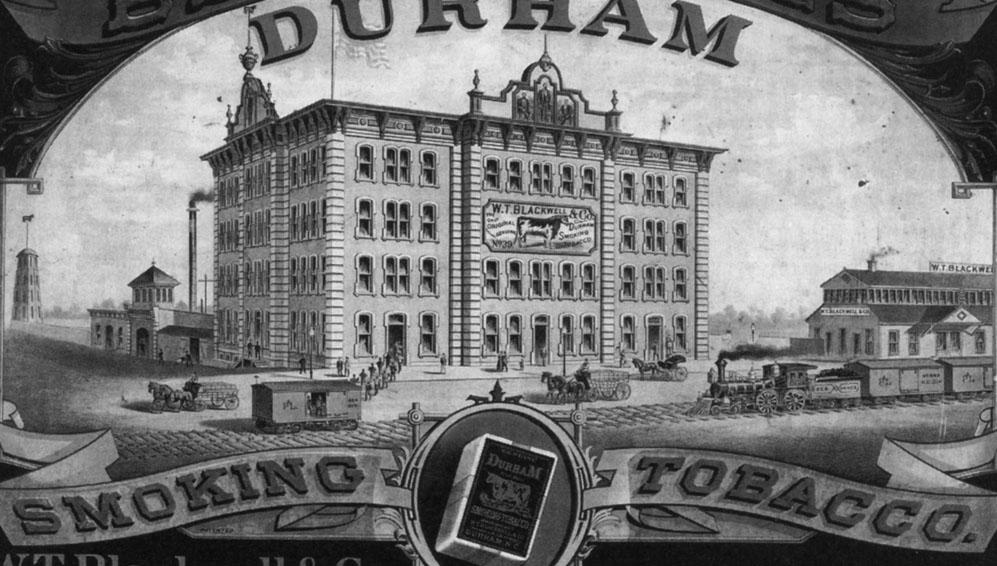
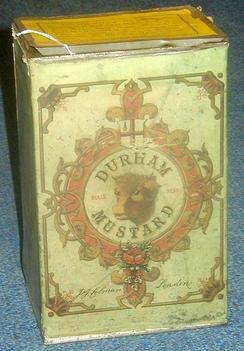


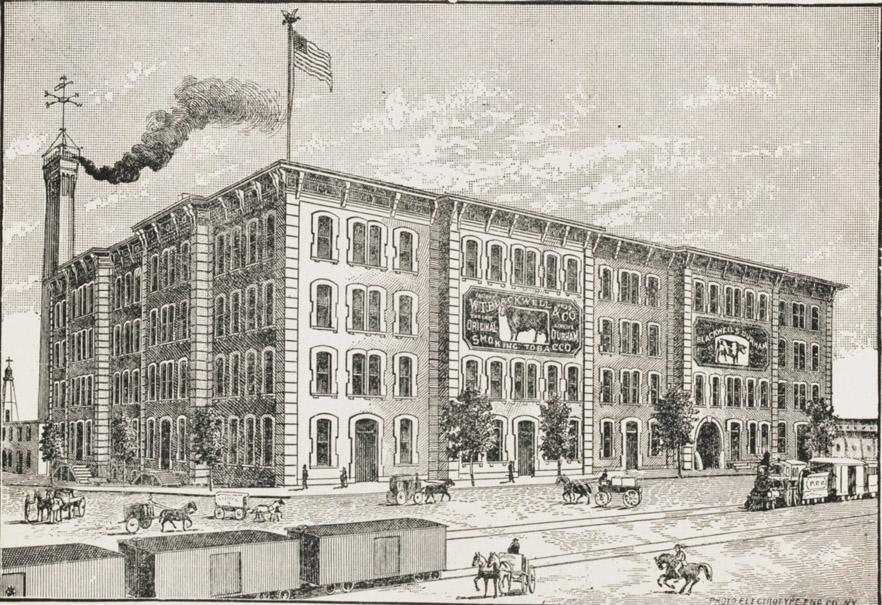
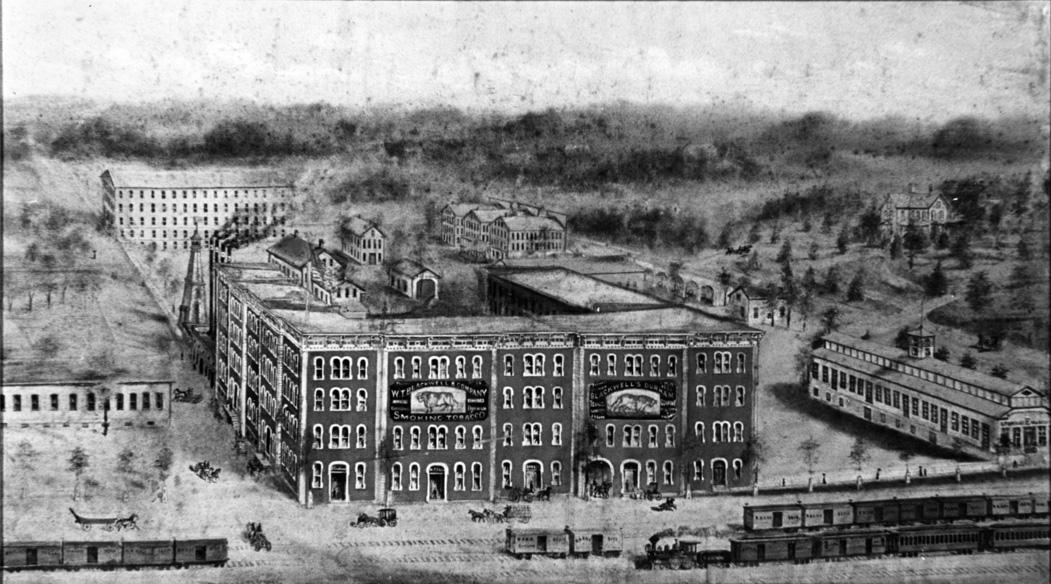
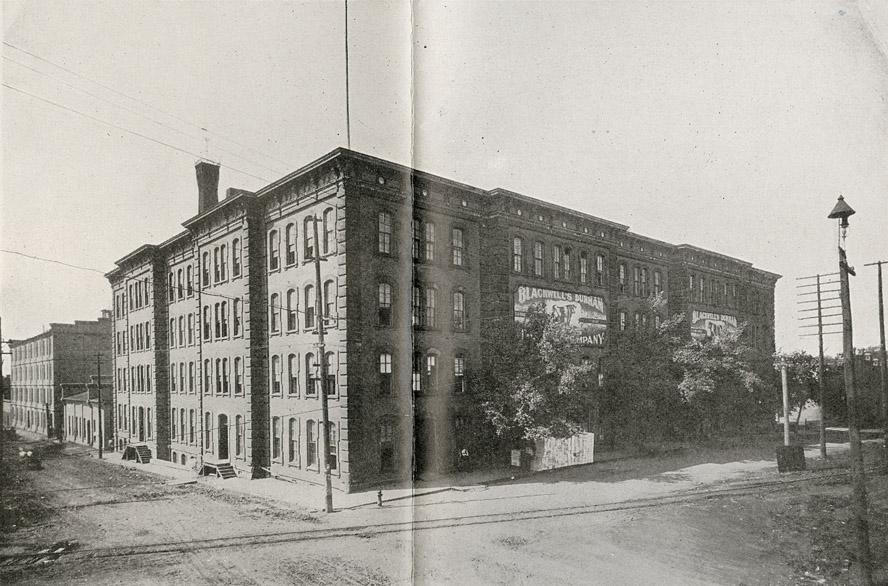

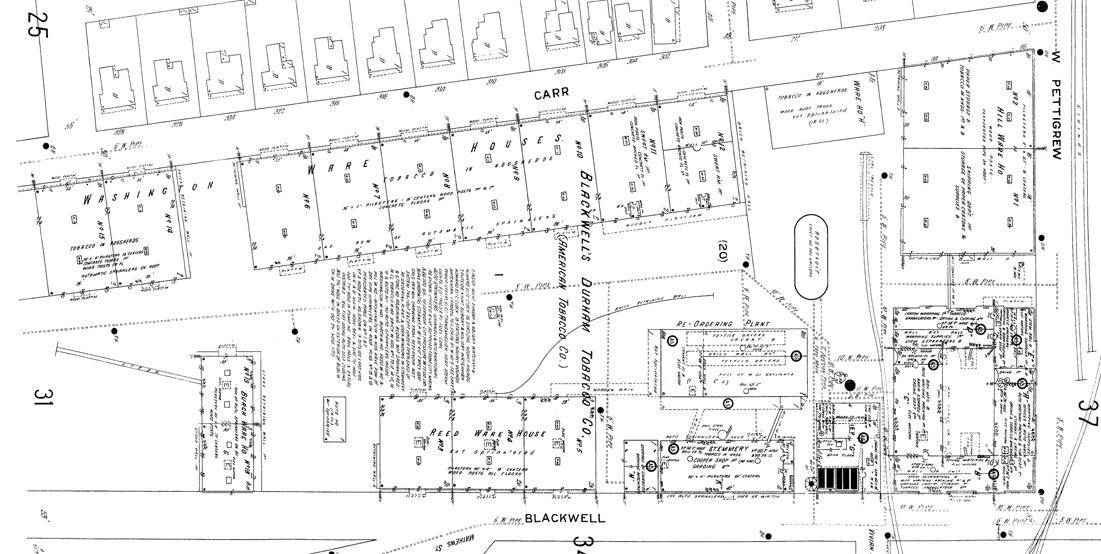

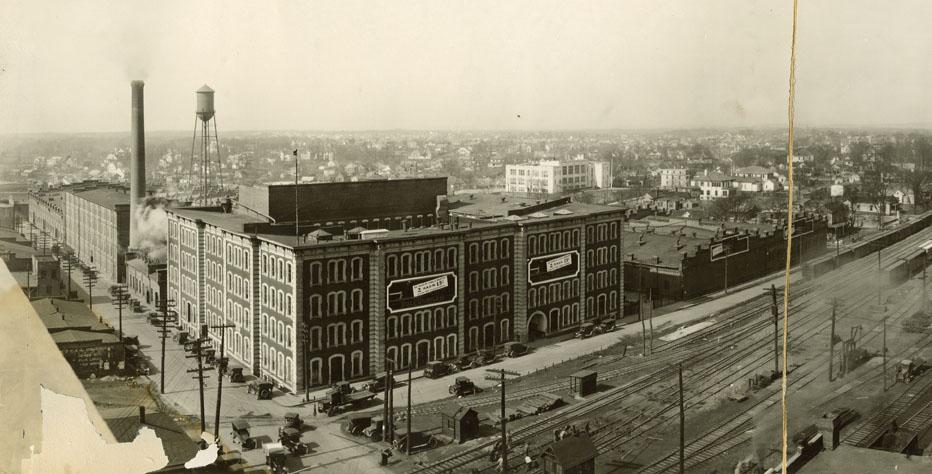
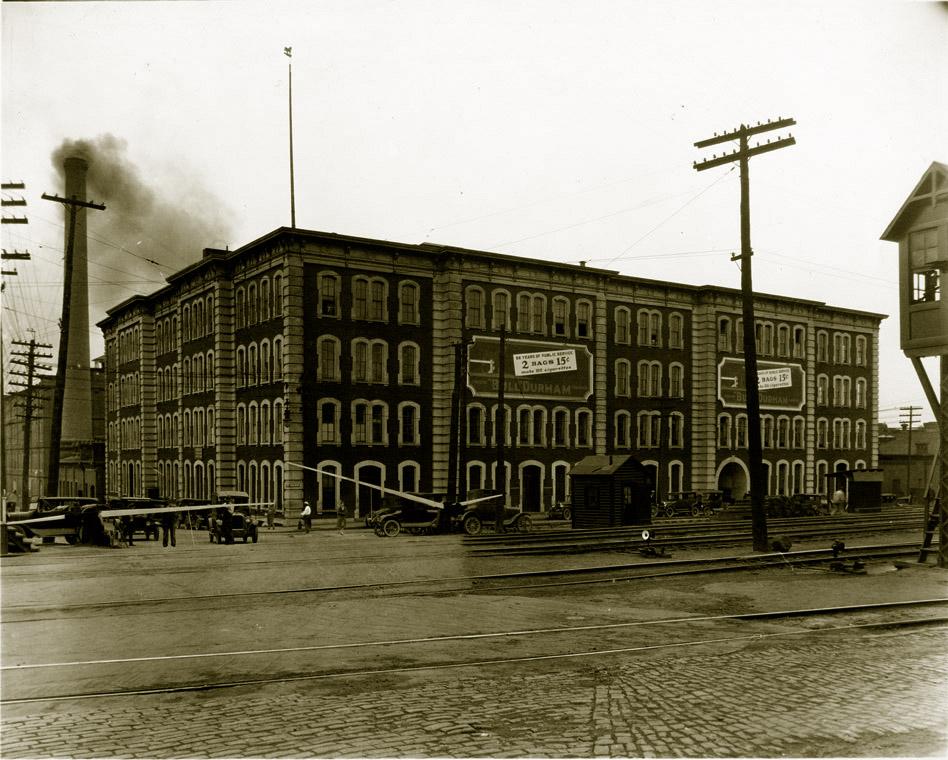
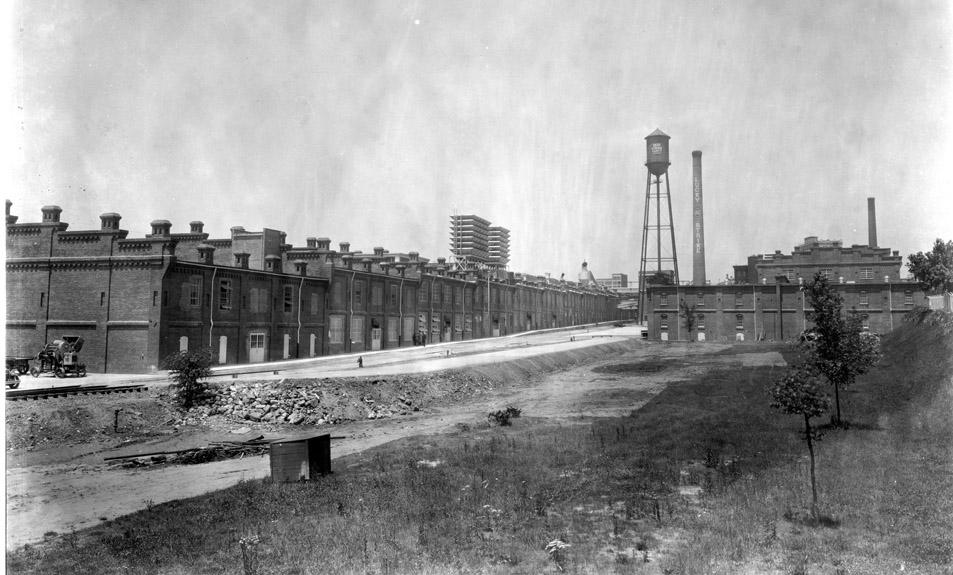
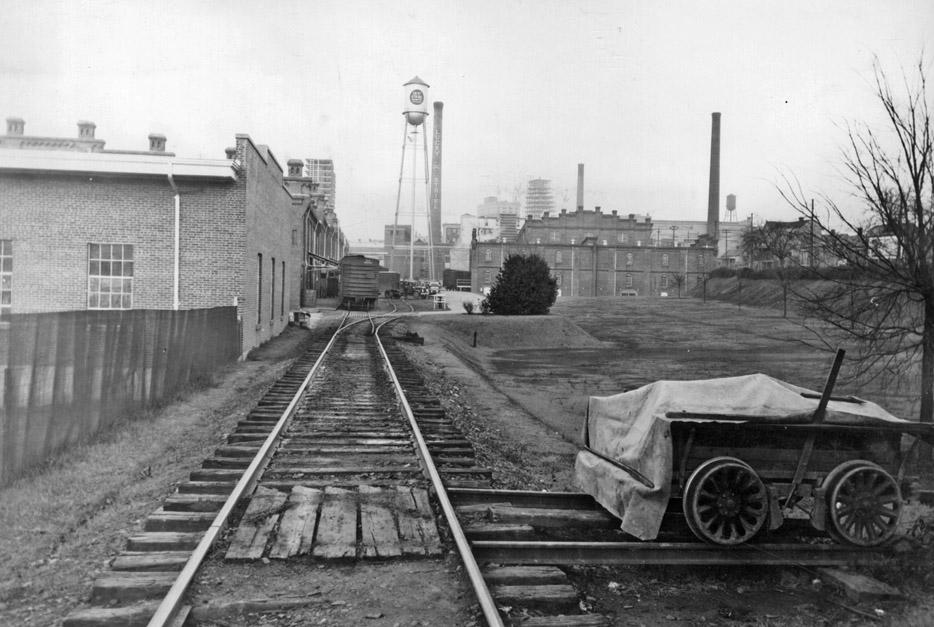
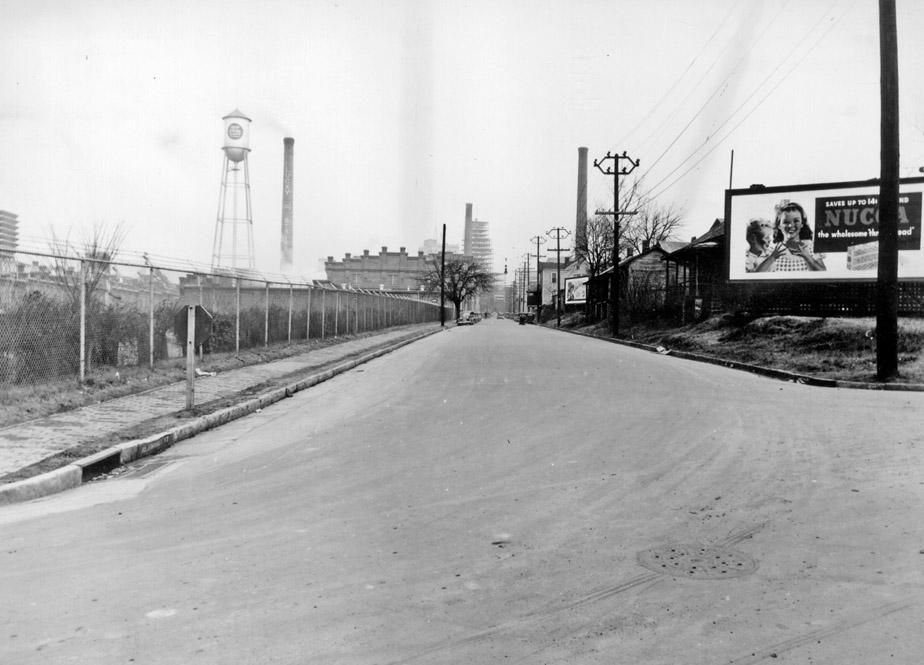
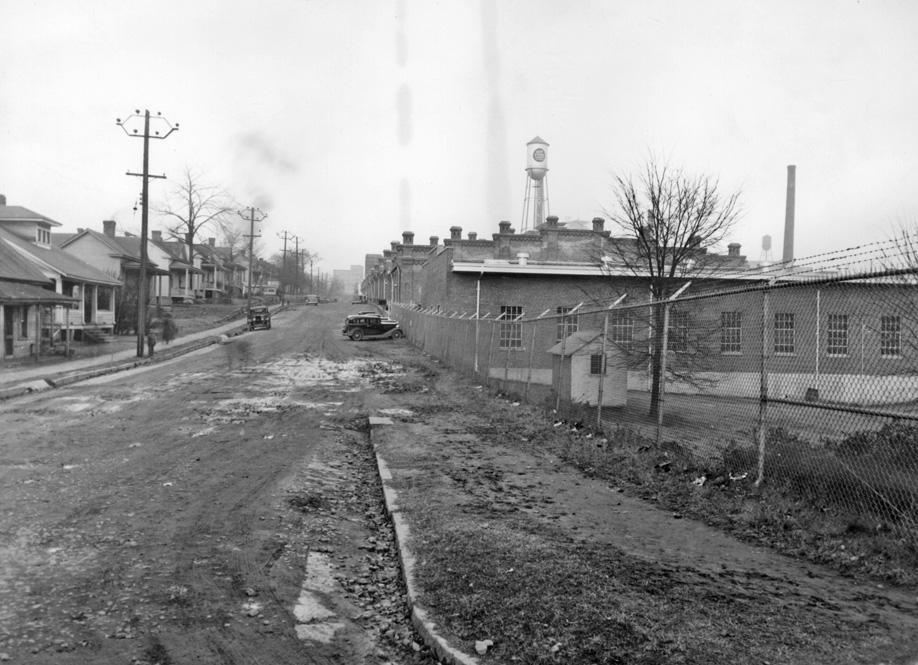
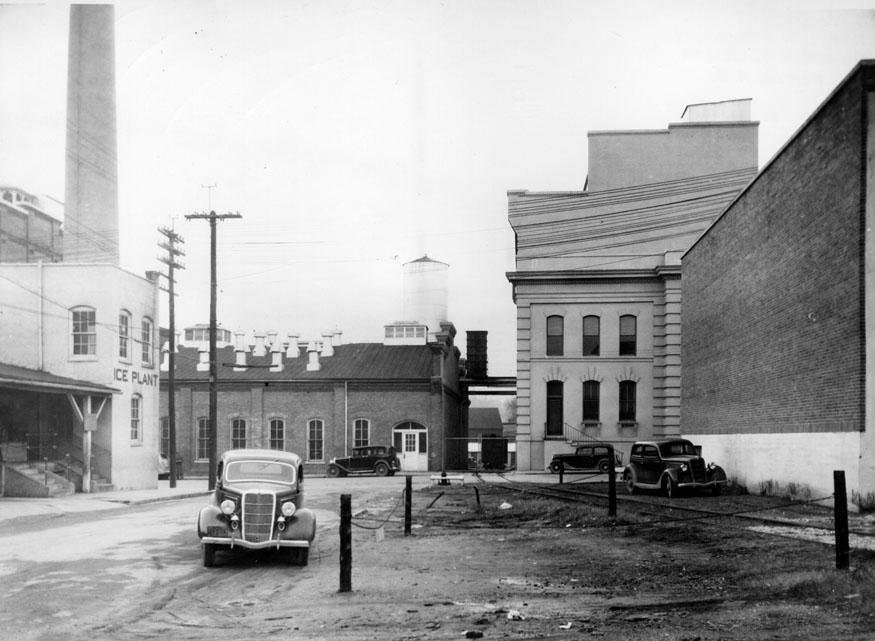
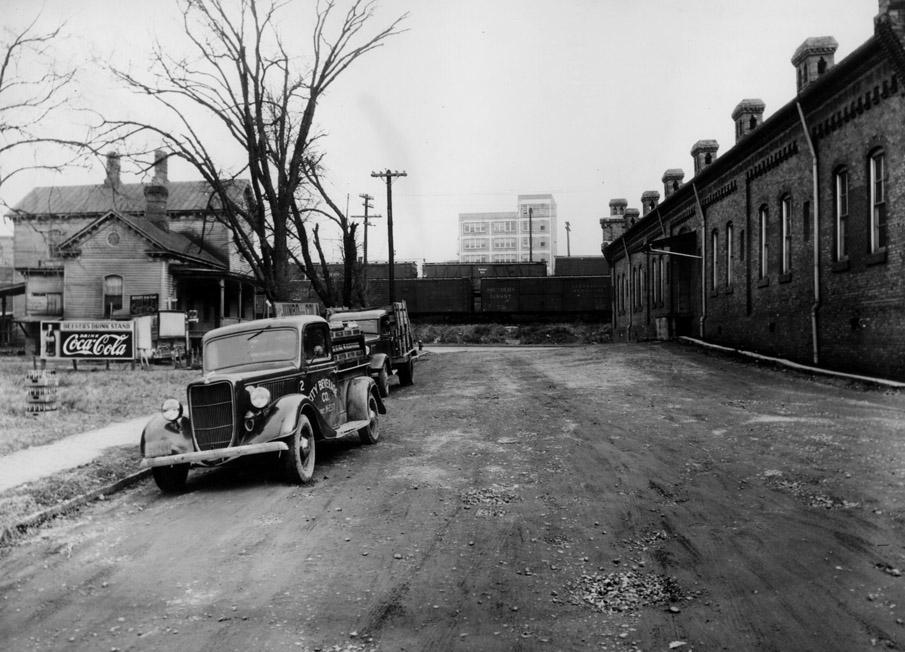
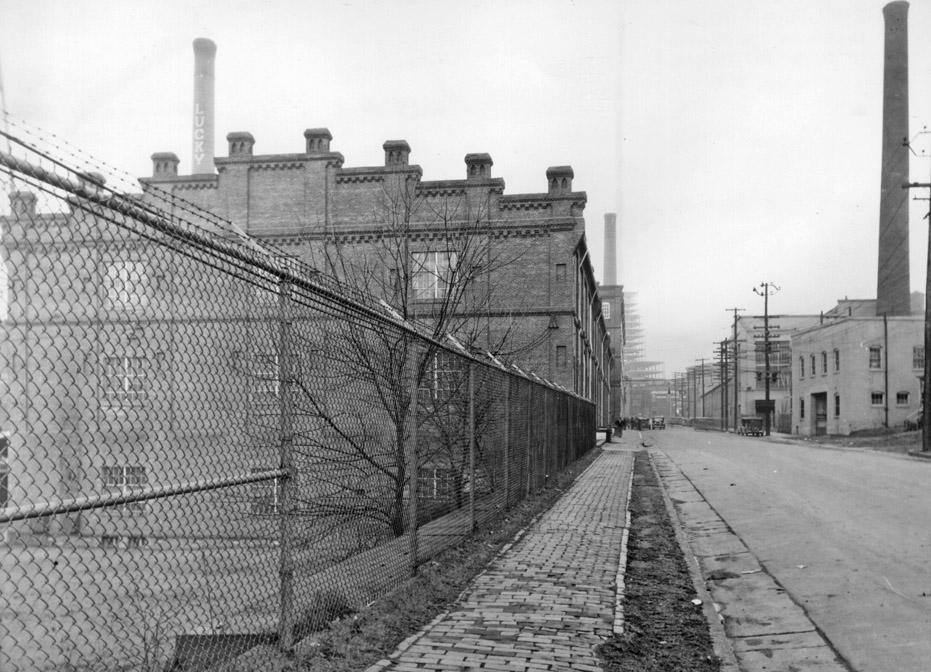
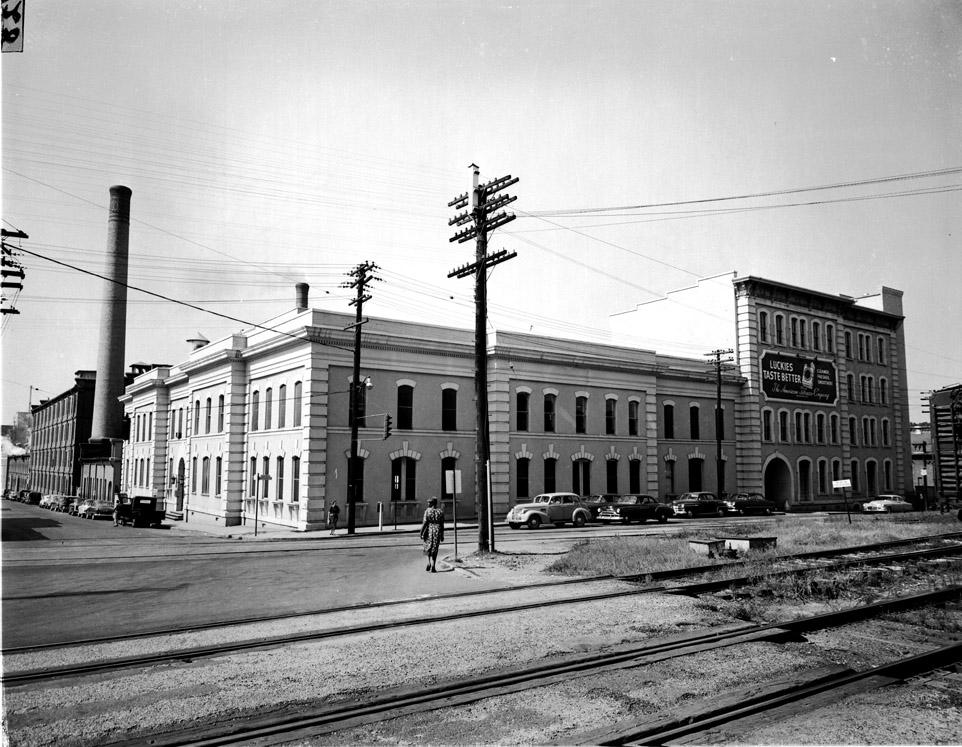
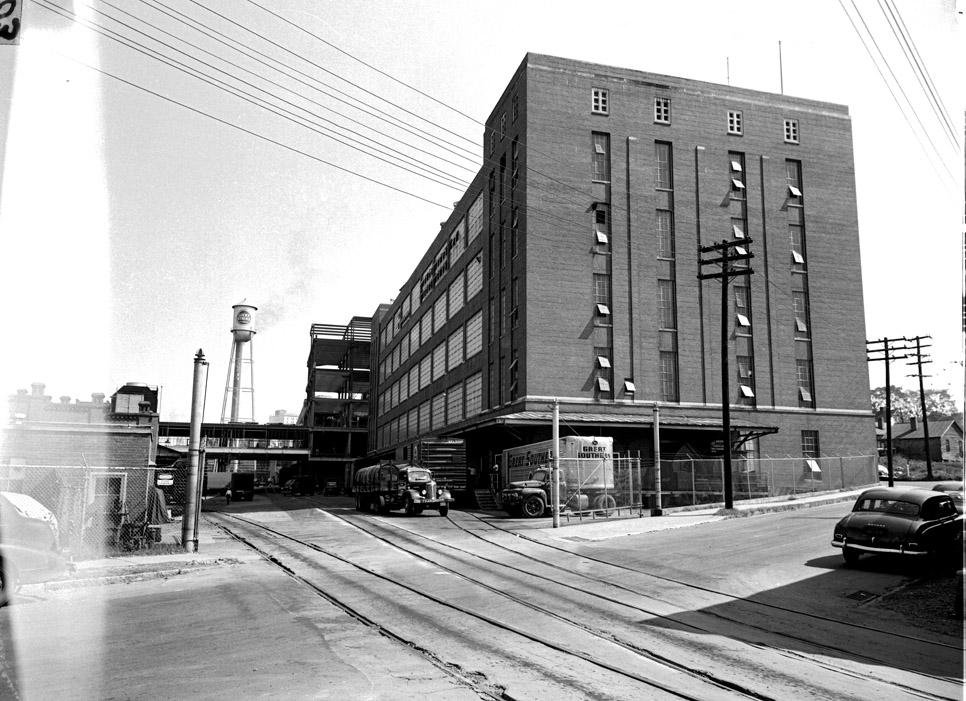
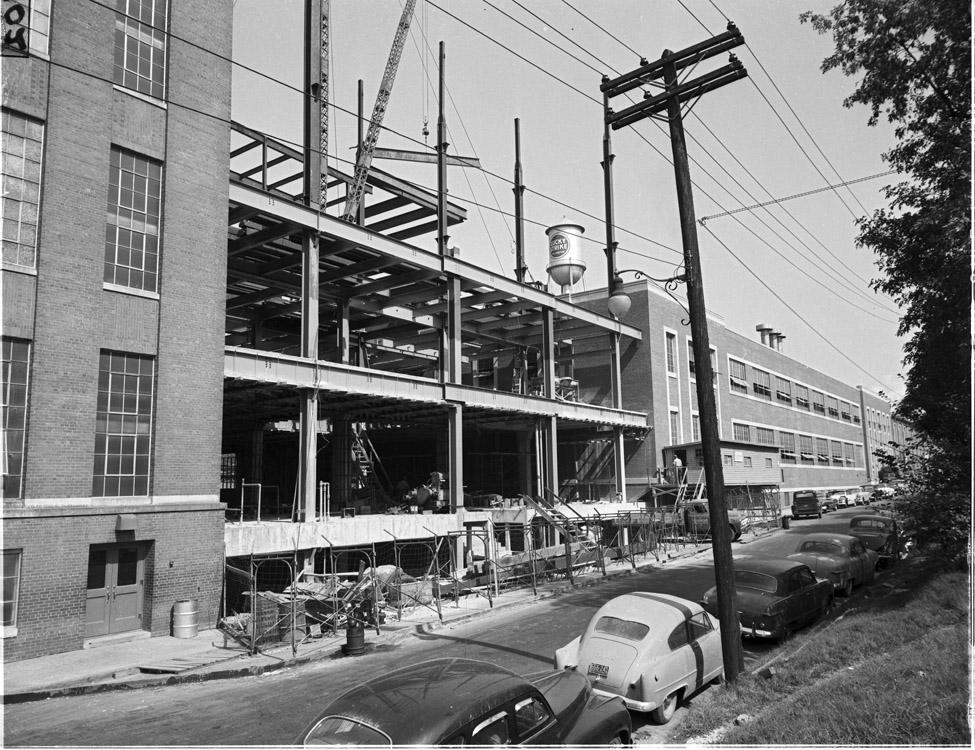
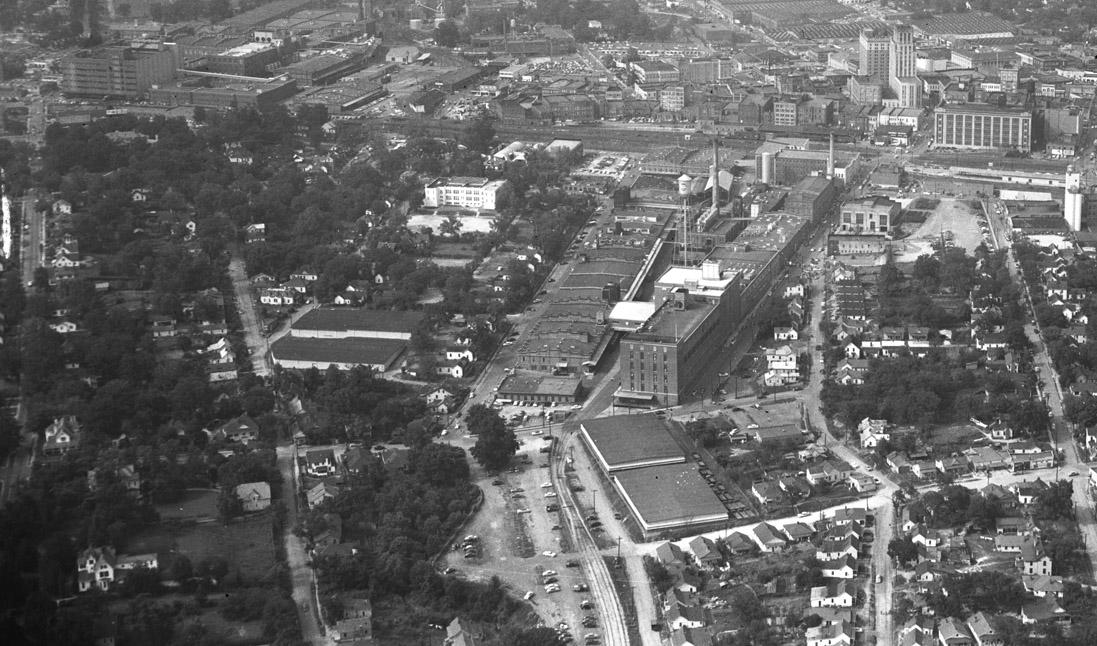

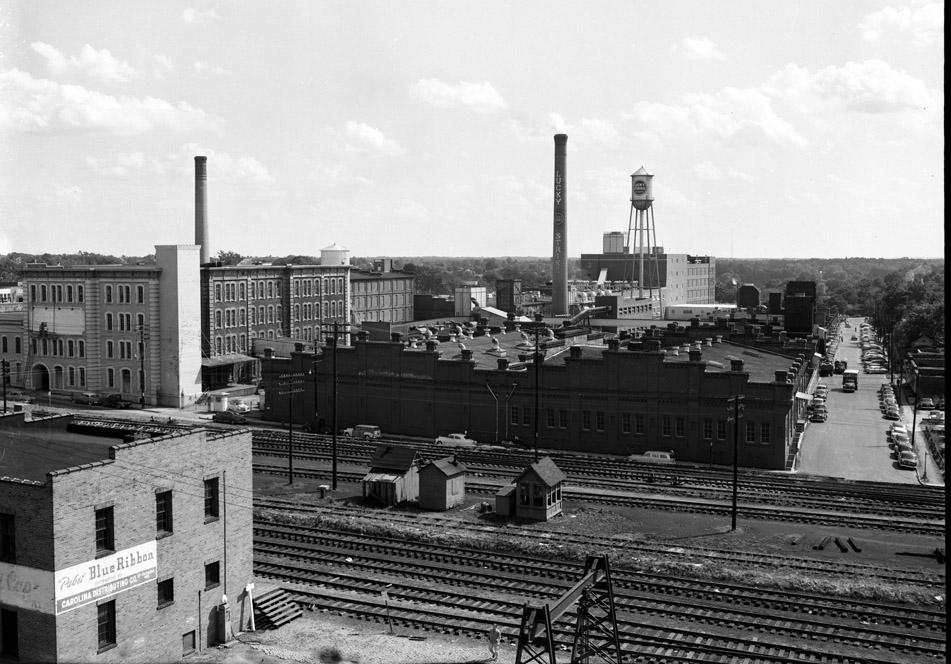

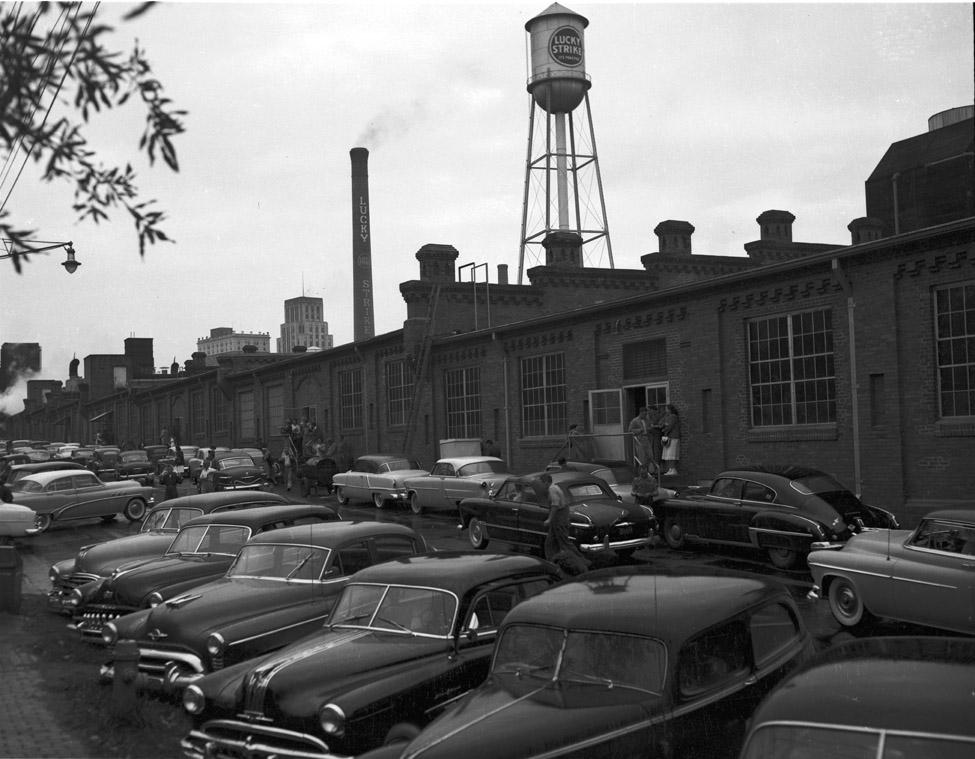
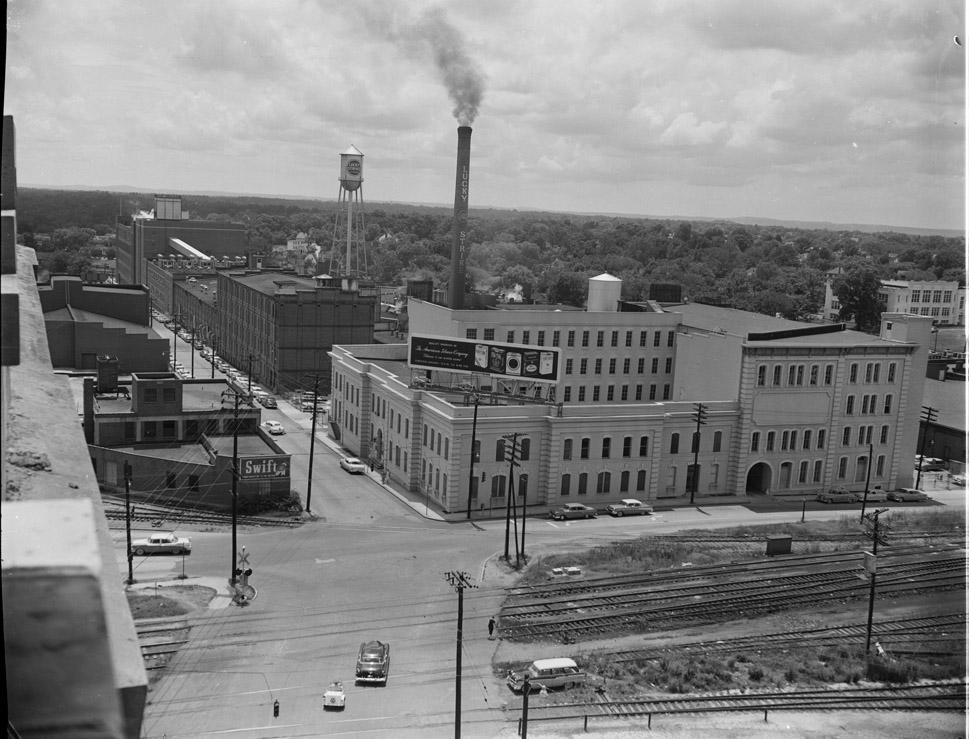
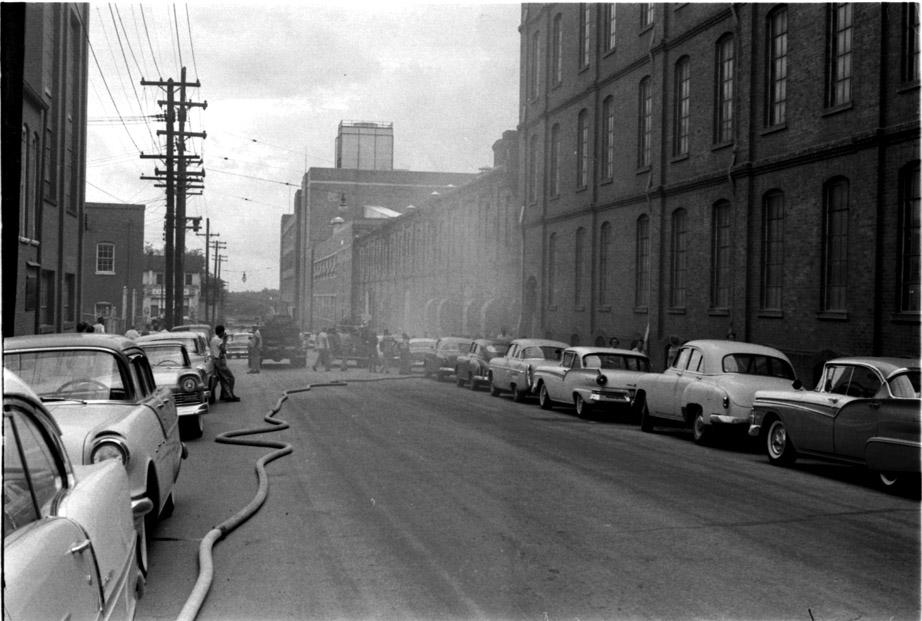

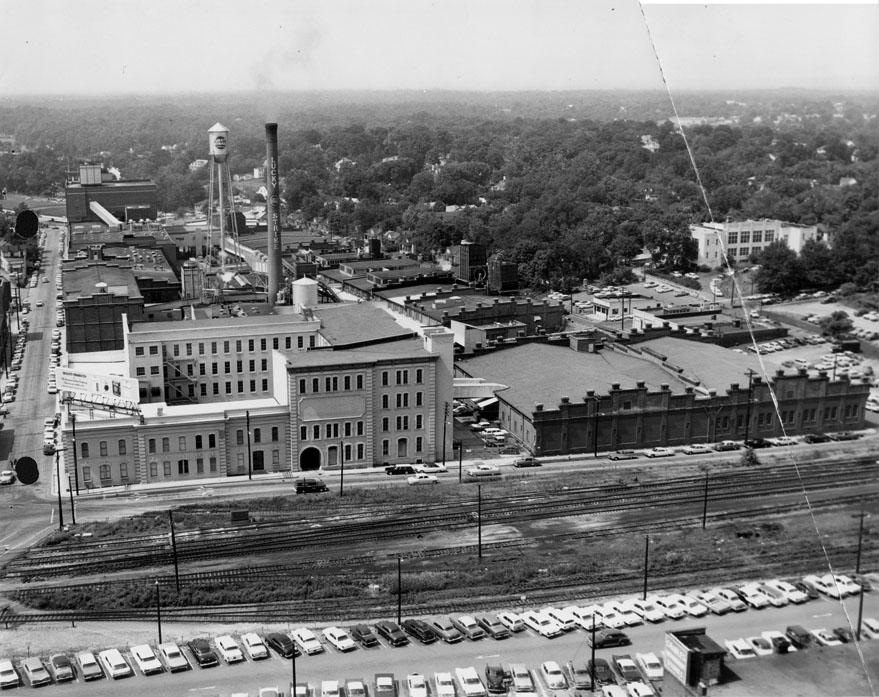
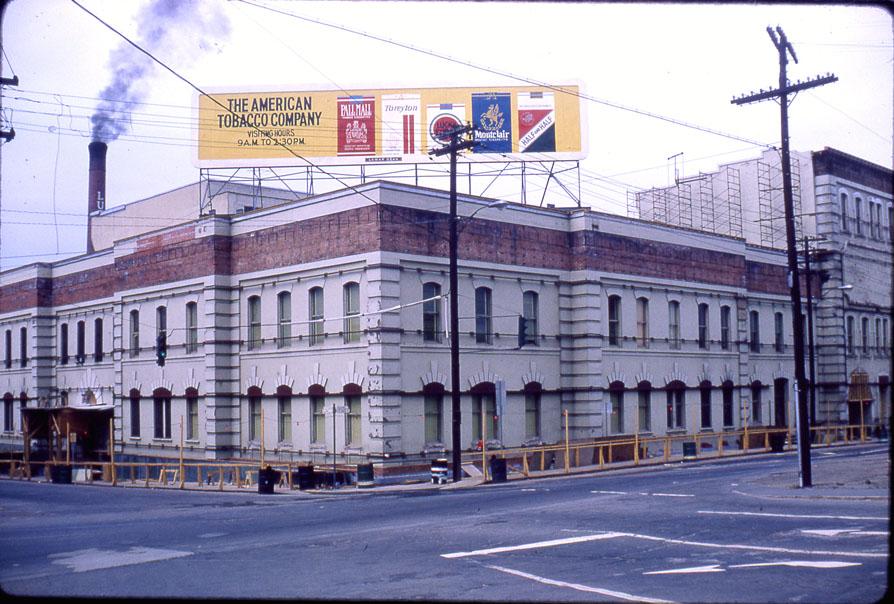
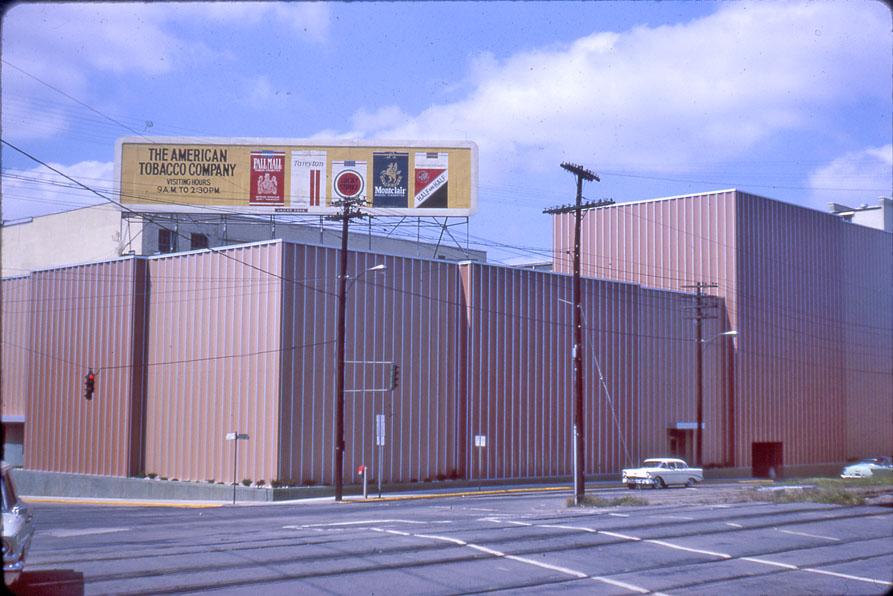
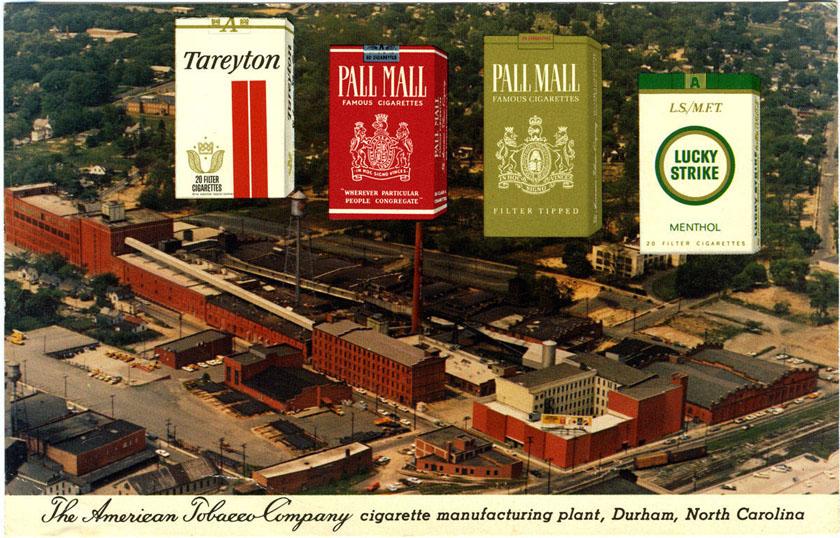
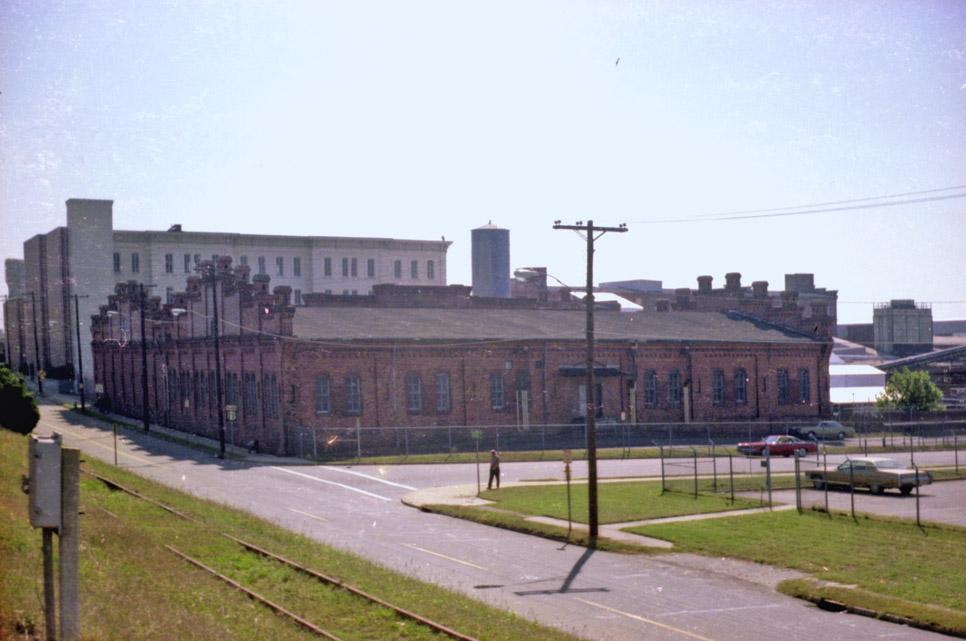
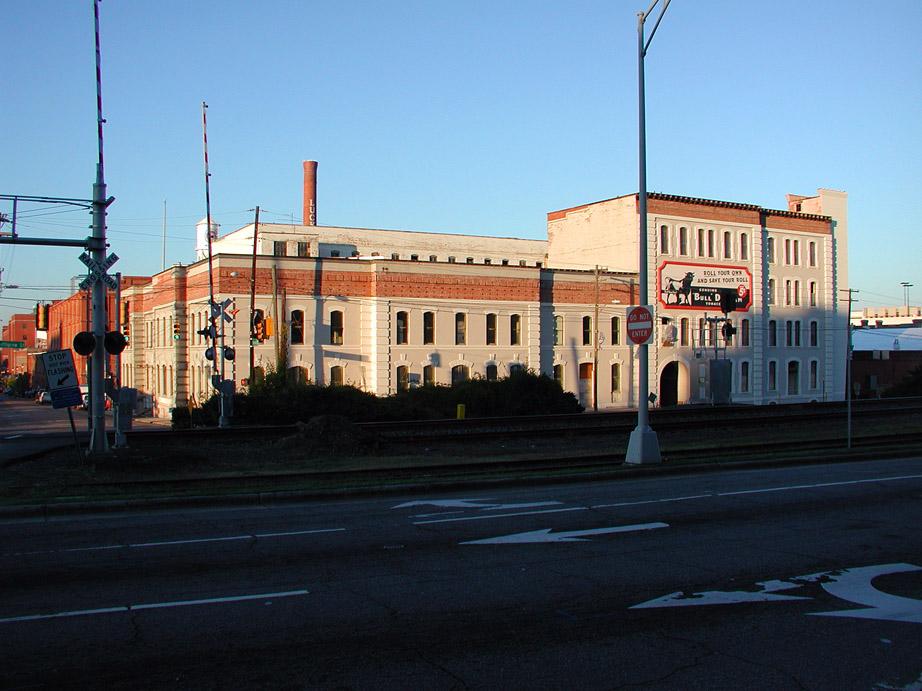
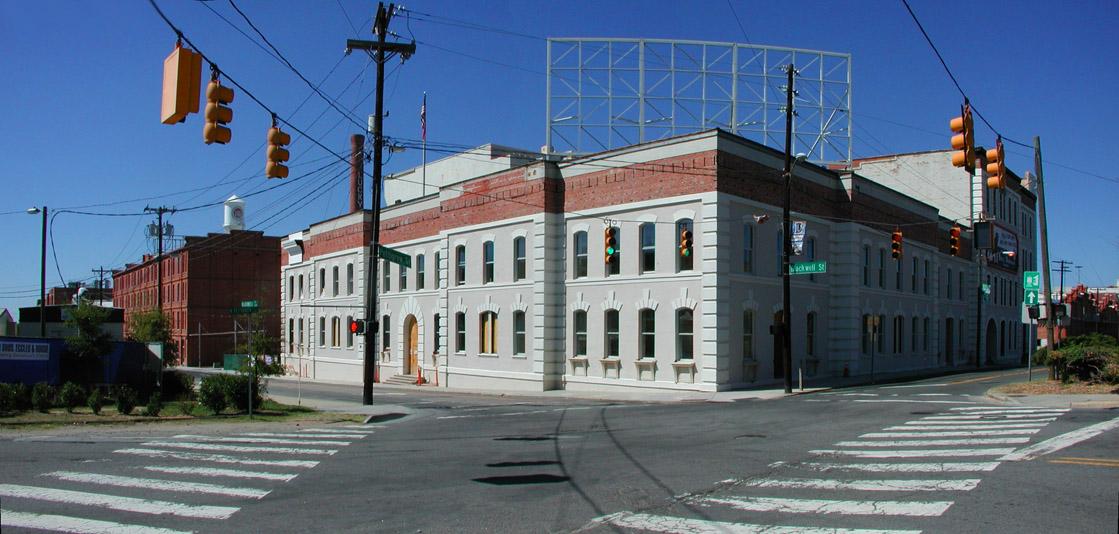
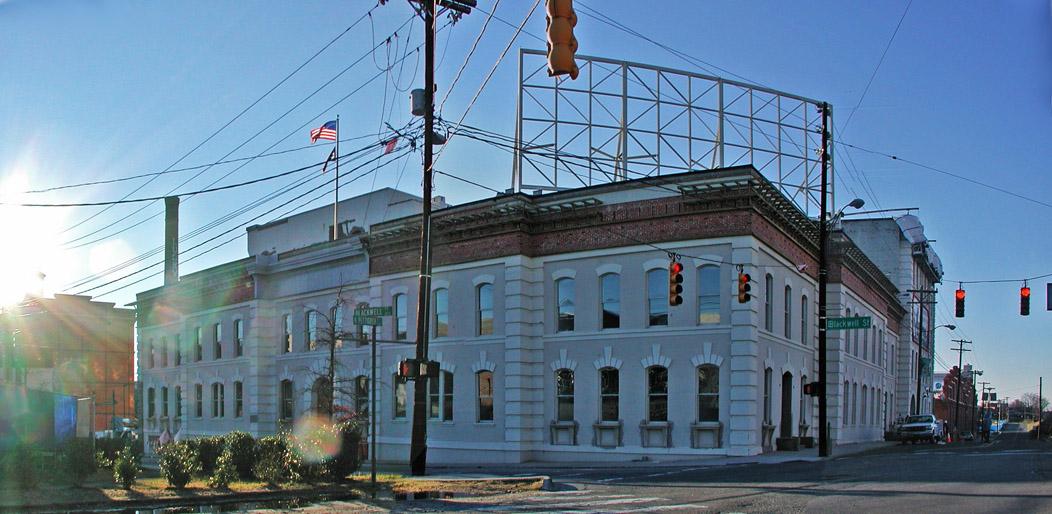



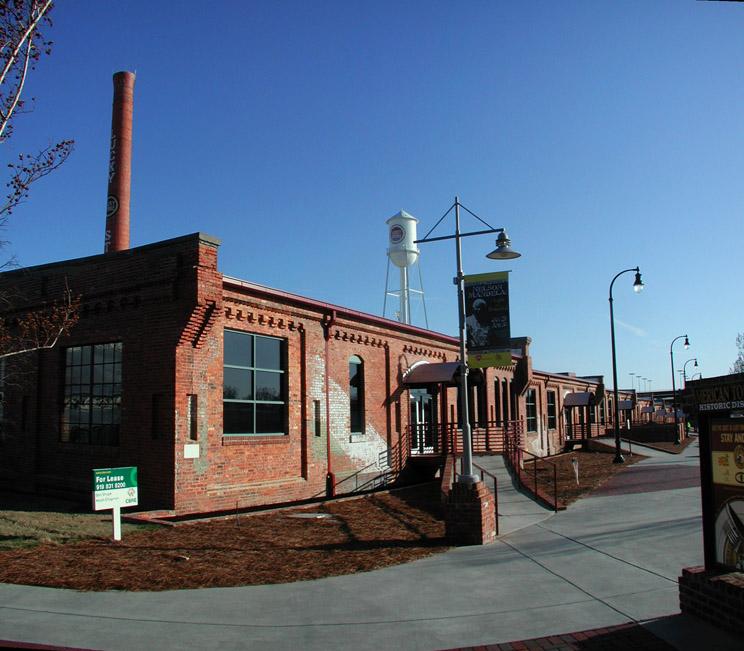

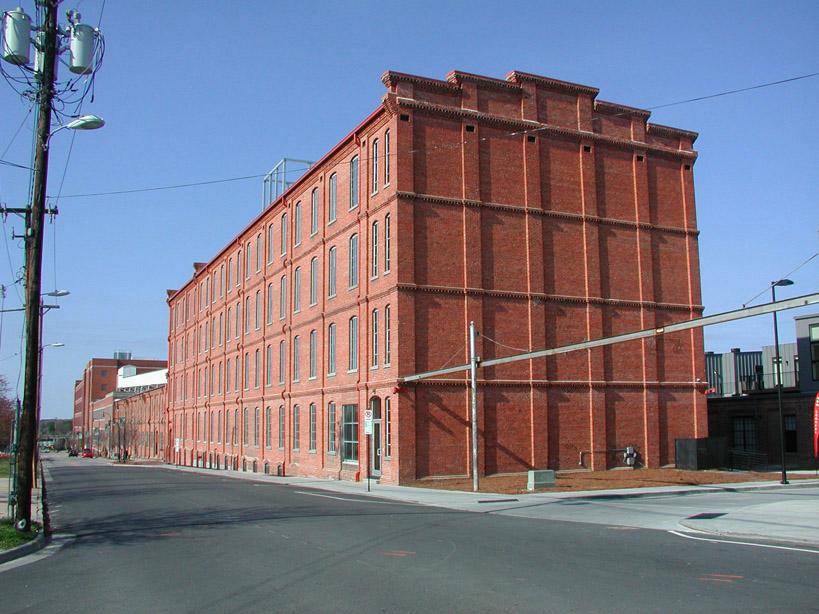
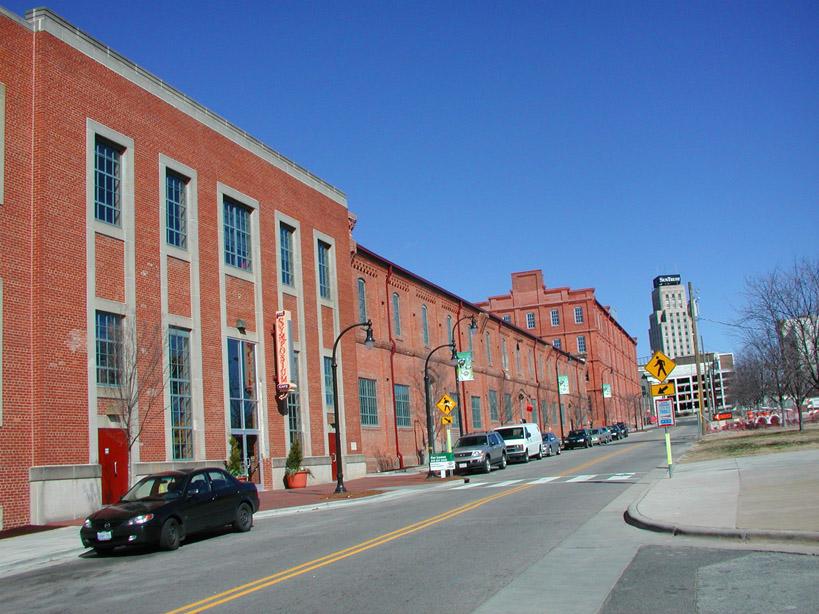
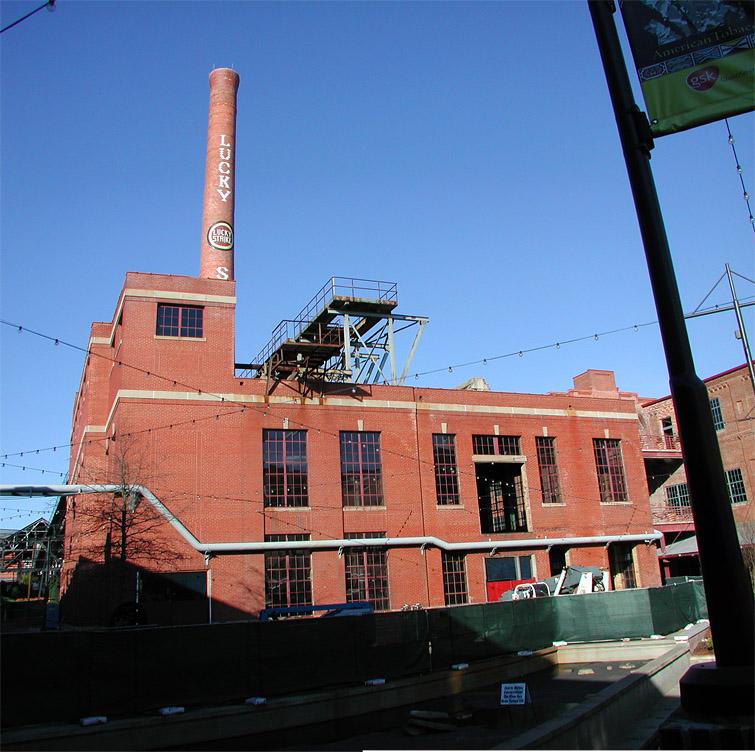
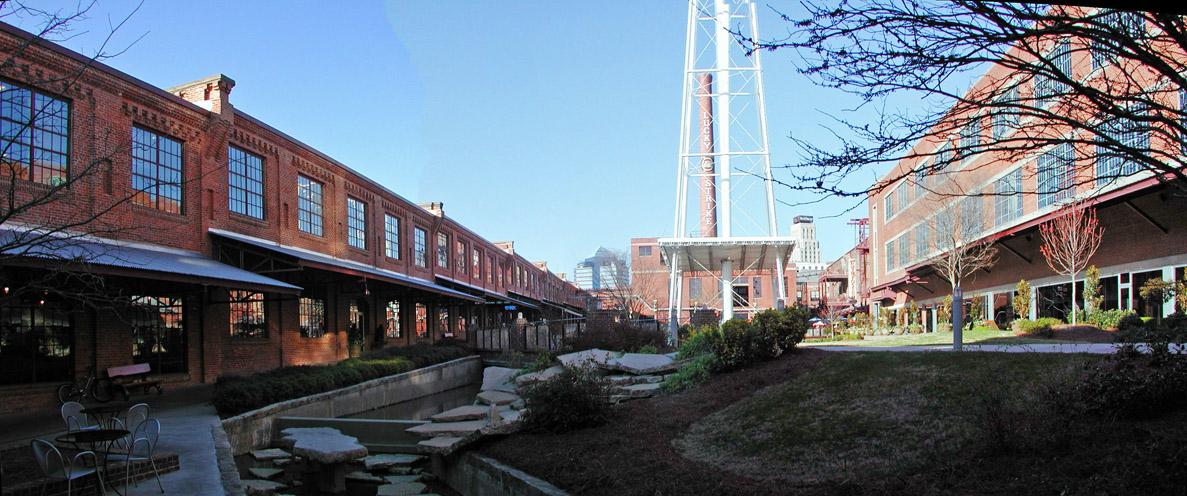
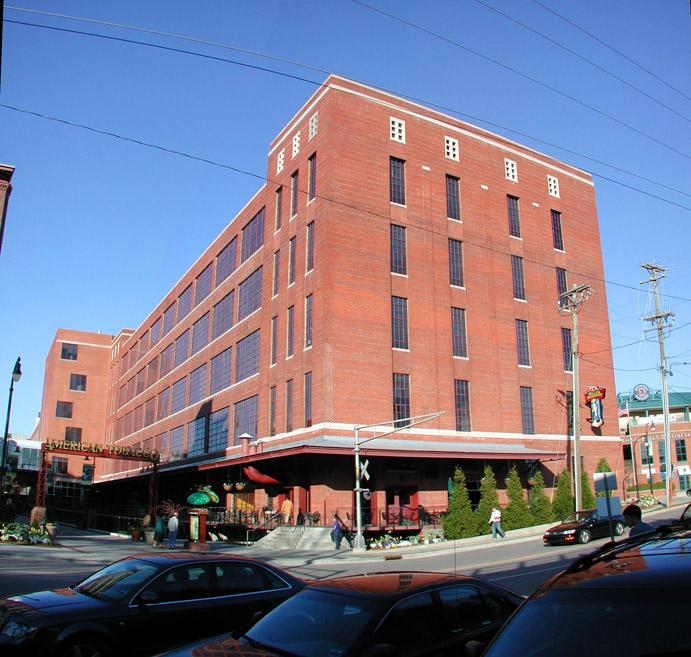
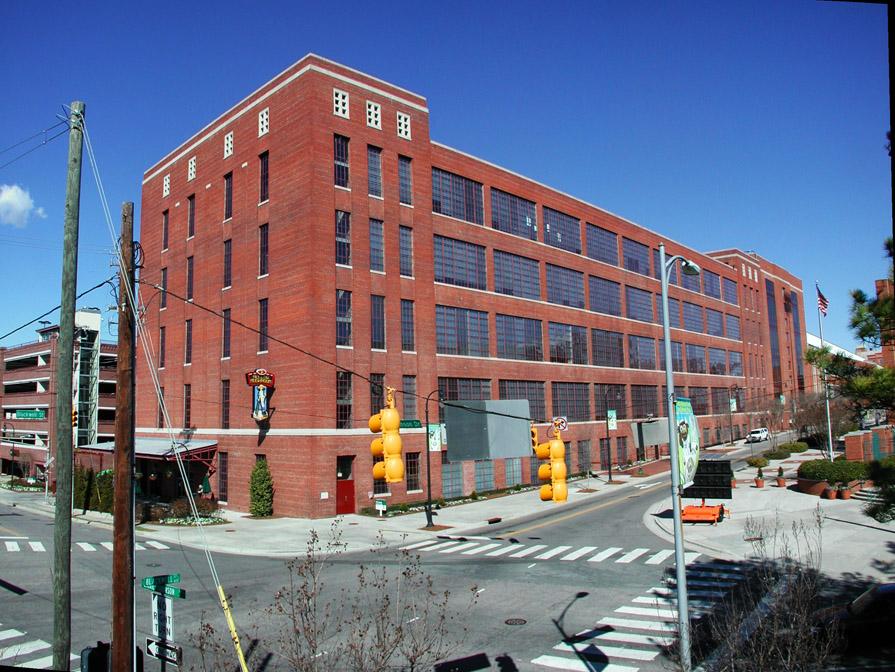
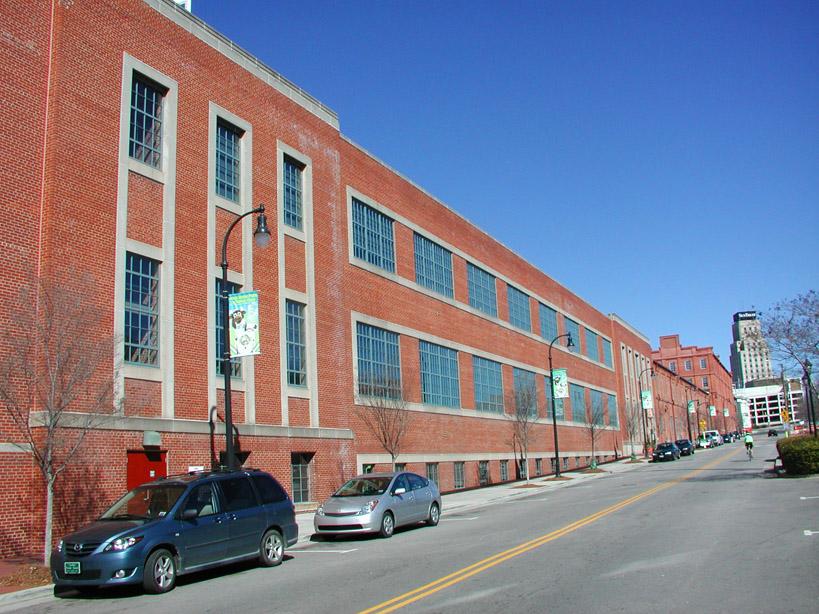
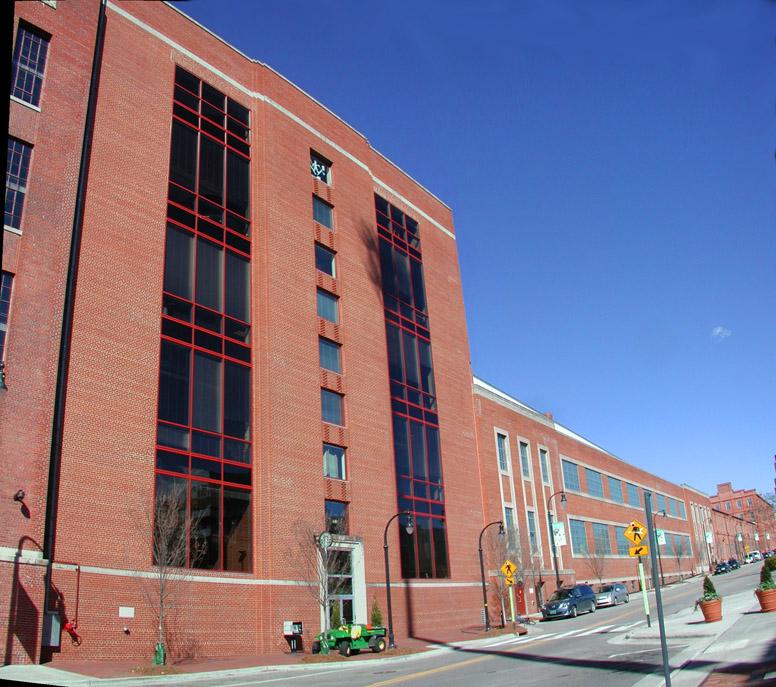
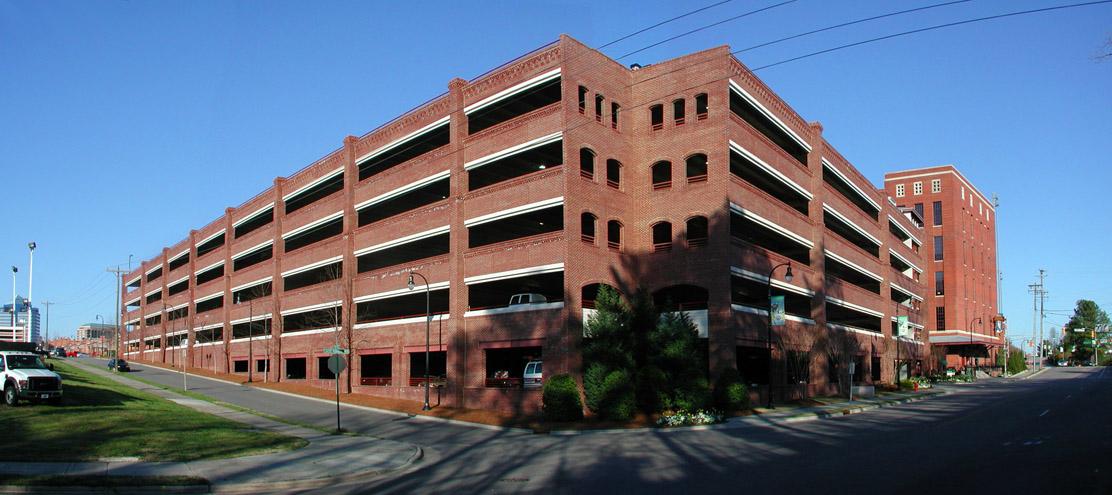
Comments
Submitted by dcrollins (not verified) on Sun, 3/23/2008 - 9:48pm
Is that "Hoster's Beer" advertised across from Old Bull? My other thought was "Fowler's".
Submitted by Anonymous (not verified) on Mon, 3/24/2008 - 1:28am
Wow, the similarily of the new pictures to the old pictures really got me thinking.
IMHO, most of the AT buildings aren't really "beautiful". Interesting, maybe, but the new giant parking deck... not really attractive. I'm all for preserving history and not creating more strip malls, but were these things really worth preserving? To me, the architecture of these warehouses is directed towards the inward spaces. They don't direct people into an outward common space such as might exist in a city plaza or the ancient agora. This bothers me.
Recently, I was at the MOMA and watched a video about the remaking of some Eastern? European cities urban core. Instead of saving all these industrial buildings, they were envisioning new open space, green buildings, effecient building techniques, and an architecture that brought people together and enabled people to live car free. AT doesn't do this for me.
I don't know. I love this blog, and read it everyday. I love history, but I hate to feel stuck in it. Somehow these buildings make me feel stuck. Maybe it is the fact that tobacco is such an agent of death in the world. Are old tobacco warehouses the best we can do? Here's to hoping the DPAC is a work of art!
Submitted by Andrew Edmonds (not verified) on Mon, 3/24/2008 - 1:42am
Gary, another great, concise but informative entry. And what -- were you hanging off 147 to take that contemporary picture of the Fowler building?!
Maybe you didn't feel the need to comment on it, but the most interesting thing to me about the drawings of the Old Bull in the Roberts's book is the erection along the roofline of the three huge portraits of the owners (Day, Carr, and Blackwell). Talk about audacity!
Submitted by Gary (not verified) on Mon, 3/24/2008 - 1:45am
DCR - Indeed, it is Hoster's. Looks like it came from Ohio.
Anon
I think the developers made a conscious choice to focus the redevelopment towards the center. It wasn't the only choice they could have made - they could have created an active Blackwell Street, Carr Street, or West Pettigrew. While I do think these buildings are beautiful, I'm not a fan of inwardly-focused development, which I think makes AT feel insular, as if it turns its back to the Durham on either side. These buildings were never designed to support ground-floor street/sidewalk activity - on any side. Maybe that's what turns you off? While I think the warehouses are beautiful, I'm more fond of historic retail buildings that were intended to interact with the pedestrian.
We certainly have plenty of space around this to create something interesting and new - as you point out with the DPAC. While I didn't support it at that price, since we've gone down the path, I wholeheartedly agree with you - I hope it's beautiful and enormously successful.
Tobacco's pretty tough - we'd pretty much have to tear down the whole town. We can take some solace, I guess, in the notion that the vast majority of that money and construction occurred before anyone understood just how bad tobacco was.
GK
Submitted by Gary (not verified) on Mon, 3/24/2008 - 1:50am
Thanks Andrew.
Indeed, I scrambled up the embankment to where it met the overpass. Less scary than trying to take a picture down the middle of Gregson St. last week with my back to traffic.
I agree - I wondered whether those really existed. Seems over-the-top, even for those guys.
GK
Submitted by Allison Kort (not verified) on Mon, 3/24/2008 - 10:54am
At the time of the civil war life was "nasty, brutish, and short". You can't blame those guys for wanting to smoke tobacco as a break from everyday drudgery.
Durham's tobacco heritage is one of the reasons I continue to enjoy the occasional cigarette (and to defend the rights of smokers in this town)...dcr
Submitted by Anonymous (not verified) on Mon, 3/24/2008 - 3:42pm
wow... amazing post!
(mmmm... Lucky Strike menthols...)
Submitted by Steve Nicewarner (not verified) on Tue, 3/25/2008 - 2:26am
Thanks for a great article. I knew some of the history behind the ATC, but having all the pictures in front of you at the same time really brings things together.
And yes, they may not be beautiful buildings, but it is alomst impossible to describe the history of Durham without them.
Submitted by Peter (not verified) on Tue, 3/25/2008 - 12:23pm
Superb, Gary. As always. Makes me proud to be moving in to Old Bull in a month or two.
Submitted by Anonymous (not verified) on Tue, 3/25/2008 - 7:55pm
Gary,
Thanks so much for compiling this information. As always, you have done a masterful job of conveying the evolution of this site. It's refreshing to read a post that doesn't end with the phrase "these buildings were demolished in the 1960's using urban renewal funds".
I think there is absolute beauty in the sheer scale of these structures, as well as in the massive timbers and elegantly detailed brickwork that define them, and I am thrilled with their preservation and restoration.
I agree that opportunities were missed that could have created better public spaces and stronger connections to adjacent streets and the ball park. I also feel that the demolition of several bays of the Washington Building for a parking garage was regrettable, and wish that more of those ground floor windows were full of retail shops instead of office cubicles. But by all measures this is a visionary project that converted a hulking razor wire surrounded nightmare into a tremendous asset. Capital Broadcasting and everyone involved in making this happen deserves an enormous thank you from all of us who care about Durham.
One question: What the heck is that Jetsons looking structure hovering in the background of the 1930's photo looking NW from Moorehead & Blackwell?
Thanks,
RWE
Submitted by Anonymous (not verified) on Tue, 3/25/2008 - 9:05pm
RWE, I believe that's the steel frame of the under-construction Hill/CCB/Suntrust building.
Submitted by Dan C. (not verified) on Tue, 3/25/2008 - 10:39pm
I think he means the structure west of the CCB building, which seems to be floating above the Washington warehouses in the one picture. It does seem anachronistic at first glance.
Submitted by Gary (not verified) on Tue, 3/25/2008 - 11:30pm
Thanks, everyone, for the kind words about this post.
Rob, I couldn't agree more about the importance of this redevelopment. I'm not sure any one thing has done more to change outside perceptions of Durham, and even Durham's perception of its downtown. I point out criticisms of the inward-focus, because I think it's still the instinct of developers, particularly given the dismal streetscapes through much of this part of downtown - solving that has to start somewhere, though.
I'm curious as well about the strange thing above the Washington warehouse - I guess it could be a cooling tower; I don't know how early AC was available for industrial settings - particularly where it would have a dramatic effect on helping control humidity, etc. for tobacco. But that's just a wild guess.
GK
Submitted by Anonymous (not verified) on Wed, 3/26/2008 - 10:45am
I want to add my voice to this post. I lived in Durham from the 70s to the early 90s, and have watched in semi-horror as my "old Durham" expanded into some suburban, LA-lite hell. I love downtown, the old downtown and all.
Recently, I spent a while in Durham, and I could not BELIEVE how amazing the new AT campus was. Sure, I knew the ballpark from a few years back, but the restaurants, the courtyard, the general sense of urban life, it was great. Sure, you have to drive to get there, but once there, you have options and it's just lovely. Would open spaces, etc. be better? Not so sure. Look at Greensboro's downtown and how they built that park (name escapes me). You can't have too much open space if nobody actually GOES there. The AT campus was full of people. That's what you need.
So, for the Anon who was worried about being stuck in the past, let me say that it's great to have an anchor for the future. As GK mentioned, somewhere down the comment chain, this one revival has done more to help me think of Durham in positive terms than any other change over the years. Thanks for the lovely history.
Submitted by Anonymous (not verified) on Wed, 3/26/2008 - 1:49pm
The AT campus is definitely one the best things to happen to Durham in several decades. Sure, it's mainly a daytime-used place because of all the offices (but at least there's Mellow Mushroom and Tyler's), and it is focused a bit too inward, but I'm very happy with how it turned out... especially considering what could have happened to it based on the City's recent record.
When it was first completed (well, for the most part), I was shocked AND awed. I couldn't believe that Mayor Billy and his cronies could possibly let something as nice as this happen in Durham!
Submitted by Jeremy T (not verified) on Wed, 3/26/2008 - 2:16pm
What a great post this is - thanks Gary.
I couldn't disagree more with (the first) anon - there is no Durham without tobacco, and razing the evidence of the past does not remove it from being. The complex may not be beautiful to you, but it's beautiful to me. We have no lack of empty space to fill with modern urban designs, without tearing anything else down (thanks urban renewal).
I think this has been a wonderful opportunity for Durham to both preserve the past and develop for the future, and it's been executed magnificently (despite any minor quibbles). These tobacco plants used to be the economic heart of the city, and now they have come to be (at least symbolically) the heart of the city's revitalization.
Submitted by Matt (not verified) on Fri, 5/9/2008 - 4:44pm
Very, very cool - thanks for sharing. It amazes me just how much the Hill building has changed in a few short years - in early 2006 when it was announced Motricity was moving in, Hill had no floors and was missing most of the roof!
Submitted by Christine (not verified) on Tue, 7/29/2008 - 12:55pm
We are new to the area and found this historical trip truly interesting. We noticed that many of the buildings are names and wonder if you can point us toward information as to how/why the buildings were named. For instance: Reed, Strickland, etc...
Submitted by Gary (not verified) on Tue, 7/29/2008 - 1:41pm
Christine
I think all of the Liggett and American Tobacco buildings that seem to have proper names attached to them are named for various executives of the respective companies.
GK
Submitted by Tanner Lovelace (not verified) on Mon, 5/11/2009 - 6:42pm
Have you noticed recently that the Fowler building has a large "1" near the top corner of it (actually, it's on both sides of the corner). I see that in your picture ( http://www.endangereddurham.org/Photos/AT_Fowler_NW_031208.jpg ) the number isn't there. I wonder when it went in and what it means.
Submitted by Tanner Lovelace (not verified) on Tue, 5/12/2009 - 3:25am
So, just as soon as I ask someone about the 1 on Fowler building a friend of mine tells me it's for "Square 1 Bank" which now has offices on the 3rd floor (and part of the 2nd).
Submitted by Lois Lee Fowle… (not verified) on Thu, 1/26/2012 - 11:34pm
Thank you for posting these great photos of the American Tobacco Company. I have enjoyed reading everyone's comments, as well. The American was a huge part of my childhood, and so these photos are bringing back a flood of memories. Everywhere I turned as a child I saw LSMFT, from the Lucky Strike Bullseye on the floor of my Uncle's foyer to the floor of my Grandfather's bar. I could sing the song from the time I - well - since the time I could sing!
Some people were commenting on the names of the buildings, and yes, they are named after some of the executives. Mr. Strickland was an exec. and lived on Vickers Ave. across from Allied Arts. He was an uncle of my uncle who married my father's sister, Nancy Fowler. He was a very close friend of the family and a colleague of my Granddaddy. He was a wonderful man who always gave my father a silly, fantastic toy for Christmas (even though he was grown man.) The last one he gave him was a bubble blowing elephant. I, personally, loved it!!!
The Fowler building was named after my Granddaddy, Preston LeRoy Fowler, who was in Durham until 1941, when he was sent to the New York office and became the Vice President of American Tobacco Co. The Corporate offices were located in the Hemsley Building on Park Avenue. My grandparents took up residence in the Vanderbilt Hotel where they lived until his retirement in 1955. During the years that they had spent in Durham they always rented the Vickers House on Morehead Ave. It is a lovely home which has now been turned into a hospital of sorts and is being of great service to those in need. My grandparents finally decided to build a home, so they could return one day for good. Granddaddy passed away in 1957 at the age of 73, after only 2 years of retirement.
My Daddy, Preston L. Fowler, Jr. was Manager of the plant in Durham from 1959 - 1961 when he died unexpectedly at the age of 42, after being transferred to Richmond to manage the plant there. We remained in Durham and sold the house in Richmond that we had just bought the month before.
It is nice to see that the Durham plant buildings are being put to good use. I know that some do not find them very aesthetically pleasing, and there have been so many more architecturally worthy examples that have not been spared, but at least they are a part of Durham's history, so for that reason I am glad they have survived. I have enjoyed this site so immensely and am painfully aware that Durham has lost many noteworthy and priceless historical structures such as Four Acres, Fair View and even the YWCA - what a beauty that was! Thank heavens we have photos of these exquisite reflections of our past.
Lois L. Fowler - "Caroline"
Submitted by Hal Goodtree (not verified) on Thu, 9/5/2013 - 4:48pm
Great story! Pulls together a lot of threads with fantastic pictures. Thanks for spending the time telling this important piece of history.
Submitted by David DeHart (not verified) on Sat, 8/30/2014 - 6:56am
I have been cleaning out some old family boxes and found a package of Genuine Durham Smoking Tobacco, NET WT 5/8 OZ. There is a band around the small package holding an orange colored book of 24 Gummed Cigarette Papers. There is a paper seal keeping the little cloth bag sealed. Other than looking old, the small package in in orginal unopened condition.
Submitted by jim (not verified) on Mon, 9/1/2014 - 12:58pm
In reply to I have been cleaning out some by David DeHart (not verified)
Lots of those around. mostly from the 50's-60's. It may have been made here if it says Durham, NC on the front label. If it says Richmond, Va., it is 1957 and newer. American stopped packaging it here about 1957 and it was done in Richmond. I have several of those, Durham labels and Richmond. A check on eBay will find plenty for sale, most people think they are older than they really are. Still a nice collectible. I bet it still has some aroma, when fresh that was a great smell from that little bag. The bags and labels were made at Golden Belt, at least into the mid 1960s as I worked there then.
Add new comment
Log in or register to post comments.